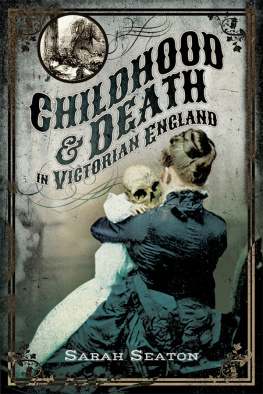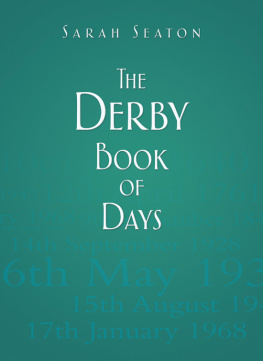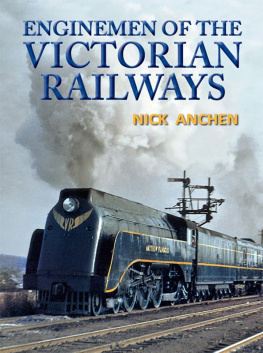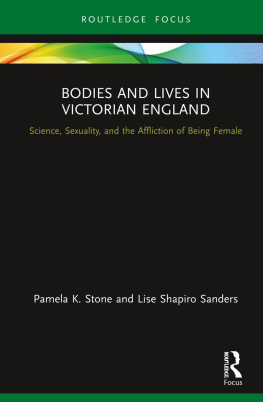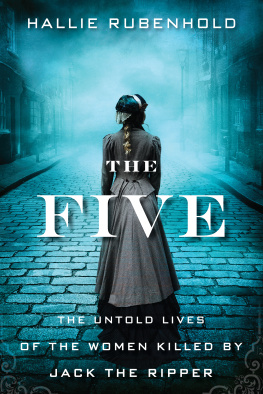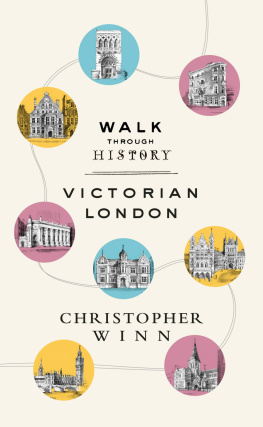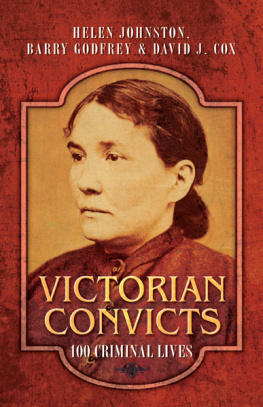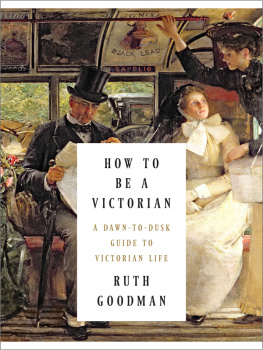
Childhood and Death in Victorian England
For my father David Holmes
A single father of three children who tried his best
Childhood and Death in Victorian England
Sarah Seaton
First published in Great Britain in 2017 by
Pen & Sword HISTORY
an imprint of
Pen & Sword Books Ltd
47 Church Street
Barnsley
South Yorkshire
S70 2AS
Copyright Sarah Seaton, 2017
ISBN 978 1 47387 702 3
eISBN 978 1 47387 704 7
Mobi ISBN 978 1 47387 703 0
The right of Sarah Seaton to be identified as Author of this work has been asserted by her in accordance with the Copyright, Designs and Patents Act 1988.
A CIP catalogue record for this book is available from the British Library. All rights reserved. No part of this book may be reproduced or transmitted in any form or by any means, electronic or mechanical including photocopying, recording or by any information storage and retrieval system, without permission from the Publisher in writing.
Pen & Sword Books Ltd incorporates the Imprints of
Pen & Sword Archaeology, Atlas, Aviation, Battleground, Discovery, Family History, History, Maritime, Military, Naval, Politics, Railways, Select, Transport, True Crime, Fiction, Frontline Books, Leo Cooper, Praetorian Press, Seaforth Publishing, Wharncliffe and White Owl.
For a complete list of Pen & Sword titles please contact
PEN & SWORD BOOKS LIMITED
47 Church Street, Barnsley, South Yorkshire, S70 2AS, England
E-mail:
Website: www.pen-and-sword.co.uk
Acknowledgements
A s we now live in the world of technology, I have done most of the research for this book online. The expanse of original documentation that can now be accessed with just the click of a button is truly amazing. I would like to thank Jennifer Sissons (formerly Page) for her continued encouragement and support, and for reading through my extensive manuscript; her help has been invaluable to me. I would also like to thank my family for supporting me and believing in my capability, especially my husband, who has had to spend many hours alone, whilst I write away in my study, I dont know how he coped!
Sarah Seaton
September 2016
Preface
H aving recently studied local newspapers whilst researching my book The Derby Book of Days , I was amazed at the numerous entries regarding childhood deaths. The way that death was dealt with and the attitudes of the Victorians do have some parallels with today, but there are also many differences which, I hope, will be conveyed to you through the cases reported in this book. I found it fascinating that crimes perceived as modern in the twenty-first century were happening back then, and that people never change, only the circumstances in how they live and the technologies that enhance their lives alter. I hesitate to add the description fuller lives because I believe that the average later Victorian child lived a richer quality of life than his modern counterparts who often live in smaller families with more distant relatives, self contained homes and computer consoles; the twenty-first century child is far more restricted than its predecessor. This book is more than an insight into childhood deaths and our need to fulfil a morbid curiosity; it is a memorial to all of the lives that never made it to adulthood.
Within these pages you will find the stories of many children, some of these tales may be brief, some a little longer as all of them spent such a short time on earth, but their experiences will stay with you for a long time. Many of these childrens stories have not been told for over a hundred years, and they may have been lost forever if not for this book. I have endeavoured to breathe at least a little of life into the stories of these very unfortunates, to place them upon the map of time so that they may enjoy an eternal existence between these pages. May their memories live on.
Sarah Seaton
February 2016
Introduction
T here is definitely a parallel between Victorian society and its twenty-first century equivalent. We may believe that we have moved on as human beings, evolved further perhaps, but as you read the reports, you will see some of the same things that we read about today in our news reports and inquests. The sad truth is that we never learn from our mistakes. One exception to this rule is child labour; in this regard, we have certainly come a long way. The Victorians were responsible for creating the kind of childhoods that our children still enjoy today. They understood the benefits and importance of a child being a child. They introduced the Education Act in 1870 so that children could learn, grow and accomplish. The majority of children recorded in this book were from the lower and working class echelons of England; they have not been chosen this way, as they are true representations of incidents that have been collated over several years of research. Many middle and upper class children were not exposed to the same risks, although they were far from exempt as you will see.
During the nineteenth century, the death rate in children was high and many would die of diseases that a child would survive today. Inadequate housing conditions, poor diet and overcrowding contributed heavily to illness. Many of the deaths were not suspicious, merely a result of circumstance. In Nottingham in the second quarter of the century, around a third of deaths brought before the coroner were in children under the age of nine. The main causes were severe burns, scalding with boiling water and accidental overdoses of opium. Drowning, suffocation and road or workplace accidents were also prevalent. For the purpose of this book, I have set the time frame between 1800 and 1901, as people and attitudes did not change as soon as the reign of Victoria began. What happened during her reign was as a direct result of what came before. It is telling of the Victorian age perhaps, that the Royal Society for the Prevention of Cruelty to Animals (RSPCA) was formed sixty years before the early version of the National Society for Prevention of Cruelty to Children (NSPCC) which began in London in 1884, becoming a national charity five years later. The first child cruelty case was actually prosecuted under the cruelty to animals legislation.
At the beginning of the nineteenth century, the majority of people were still living in rural villages and hamlets, and the mothers place was in the home where she may have taken in work to supplement the family income. With the onset of the Industrial Revolution, many of these mothers would move with their families to the larger towns and cities to find work in the factories and mills. With the introduction of the Census Act in 1800 the first census of 1801 recorded that there were 8.3 million people living in England. By 1851, the population had risen to 16.8 million and by 1901, to 30.5 million. It is easy to see why, as people moved to find work in the large towns throughout the century, overcrowding and poor housing conditions would present a problem. Many struggling families relied on the local system of poor relief. In 1800 it was administered by individual parishes; overseers would collect rates from parishioners and pay out to support them should they fall into difficulty. In 1802, poor relief spent in England and Wales amounted to 4,078,000 and by 1832 it had risen to 7,037,000.
In 1834 the New Poor Law was introduced, which meant that the responsibility for pauper children came under the authority of the newly formed Poor Law Unions. Parishes grouped together and financed purpose-built workhouses, where if families needed to be admitted, they were divided into dormitories and life became harsh and regimented; for many people the workhouse was a last resort. This system existed until 1930 when the Local Government Act was introduced and where personal assistance was transferred to local councils. Guidelines under the 1834 Poor Law stated that mothers of illegitimate children should get less support; under the old Poor Law, fathers were sought out to pay for their childrens upkeep which meant examinations of witnesses and those accused as potential fathers by parish officials. New poor-law authorities were deterred from attempting to identify the fathers of illegitimate children and recover the costs of child support from them as it encouraged women to stay single and have more children without marriage. Workhouses were instructed to give pauper children at least three hours of schooling a day and to employ a school master and mistress. As well as learning about Christianity, the children were taught reading, writing, arithmetic and were trained to be useful in industry and virtue.
Next page
